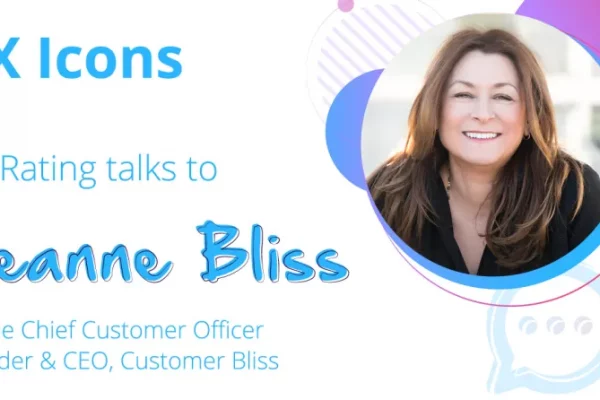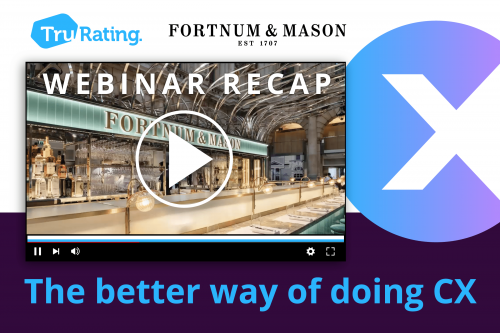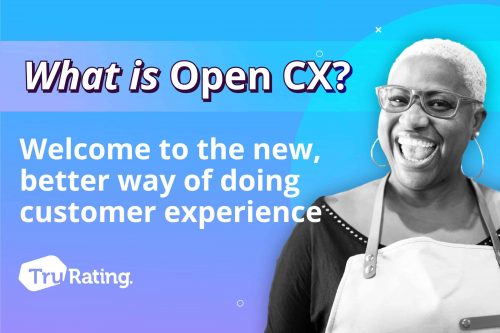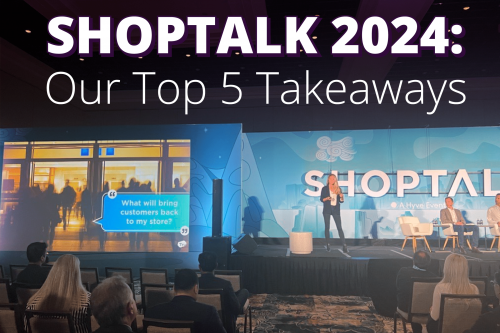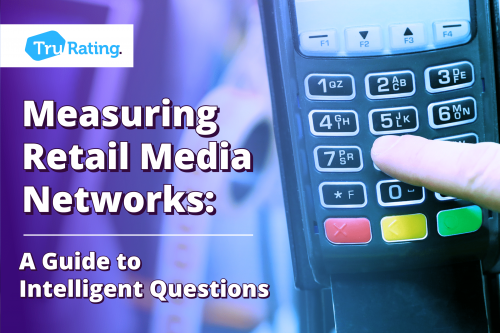Jeanne Bliss is widely known as the “godmother of customer experience”. Since 2002 she has guided customer experience transformations for major global organizations with her firm, CustomerBliss, and has inspired audiences through her keynote speeches. She is the co-founder of the Customer Experience Professional’s Association.
Jeanne’s latest book Would You Do That to Your Mother? is available now and offers a personal take on business fundamentals thanks to her uniquely human approach. We were honored to speak to her, and covered so much interesting ground that we had to split our conversation into two!
Another fantastic entry to the CX Icon series – enjoy…
For those who may not know you by name, could you tell us a little bit about yourself?
I was the first Chief Customer Officer at Land’s End, Microsoft, Coldwell Banker and Allstate Corporations. In 2006 I wrote my first book Chief Customer Officer. Since then I’ve been coaching senior leaders and organizations who have either hit the wall or are just starting their transformations. Very often, I’m helping companies with the role of Chief Customer Officer or working with a team of people doing the work of a CCO. I’m also the co-founder of the Customer Experience Professionals Association.
Since you started writing and about and advocating for the role of CCO, do you think the business community has caught up when it comes to thinking about CX?
I think three big forcing functions have occurred to make the customer experience more deliberate and wanted.
1. We went through an economic downturn where enlightened companies (and even the less enlightened) finally reconciled and understood that the organic growth of their current customer base, was more profitable and sustainable than relying on pure acquisition. For a long time, acquisition or the sales strategy was considered the only growth strategy.
2. The explosion of social media has put storytelling in the customers’ hands. Businesses can’t just make unchallenged claims about who they are, they have to prove it through their behavior and their actions. It’s about how customers are treated, the humanity and empathy of the organization, how deliberate they are in helping customers achieve their goals.
3. Leaders around the world began recognizing the challenges of running a silo-based operation. Independent KPI’s can add complexity to the customer’s experience. When KPI’s are misaligned, business silos don’t unite organically, and it’s being recognized that either a Chief Customer Officer or a group of people performing that role, needs to help unite the organization.
What are the most common challenges for the C-Suite in terms of actually implementing an effective strategy?
Two things tend to stand in the way of any well-intentioned organization. One is a united leadership team. If leadership isn’t united in understanding and recognizing where they are in terms of both customer and employee experience, any effort to move forward will hit a wall of misaligned people.
The second is about deliberation. Leadership needs to understand and recognize that customer experience is a deliberate set of actions and work they need to be personally involved in. Simply jobbing out a voice of the customer program and passively consuming it isn’t enough. Personal and deliberate involvement is critical. Strategically and symbolically – it helps the wider company recognize the work as real.
Often work to do with CX, in a well-intended way, occurs because scores are bad or a leader goes out in the field and has a ride along to visit a store and they see something happening, and suddenly that’s the new priority – but we don’t know in the context of everything occurring, if that’s the right priority, let alone the number one.
Interesting…
The other challenge is that lists of actions or problems start to get generated in silos. What we appear to be working on becomes so large that it becomes easy to give ourselves a false positive. We trick ourselves into thinking the sheer volume of actions will have an equitable impact on the customer experience.
If we can just focus on one or two things, and really solve them end-to-end, that process becomes an iterative and repeatable skill, that positively impacts the lives of employees and customers. But if we’re exhausting the organization while simultaneously giving ourselves a false positive, and we’re shocked that customers are still unhappy, then customer sentiment and feedback aren’t in alignment with needs. Quite honestly that’s the crossroads we’ve been at in this field for a long time.
Would you say there is a common set of behaviors among retailers who are currently ‘getting it right’ when it comes to customer experience?
Clarity of purpose. The organizations, CEOs and leaders that immediately spring to mind as ‘getting it right’ might do a wide variety of things, but they’re all very clear about why they’re in business. I just interviewed the CCO of R.E.I (Ben Steele). R.E.I. is a retailer that is very clear about their purpose, which is to help people be outside and have a life that includes the outdoors and activity. That’s great! But to truly fulfill that purpose the organization needs to hire people who embrace it and live it and can help customers in whatever their version of that is, even if they happen to be in New York living in a little apartment. Their people need to operationalize the company values through their actions and behavior.
That deliberateness of saying “Who are we?” takes hard work and heavy lifting. It’s quite honestly rare, but those that do it are the companies that you truly, truly love. It’s not an everyday plan or set of actions; it’s about leadership first, and deliberateness, and being what I call a “salmon leader” and choosing not to do a certain number of things.
Here’s another example. Virgin Hotels decided they were not going to charge for room service or WIFI. Raul Leal the C.E.O. considers WIFI a right, not a revenue stream. They have deliberately walked away from the add-on charges that traditional hoteliers look at as a revenue stream. Instead, they said, “We’re going to compete on service and experience and make up our revenue and growth in that way,” and they have.
They’ve been named the number one hotel by Travel and Leisure, they are expanding exponentially, their profitability and growth are very high. That takes leadership and specificity.
Would you say that brand authenticity has become just as important a part of customer experience as, say, how much something costs, or how quickly it can be delivered to you?
I would say it’s surpassed it in importance. Our tolerance for inauthenticity is much, much lower than it was in the past. Trust is the most powerful KPI that an organization can have, but you have to operationalize trust with your behaviors. You have to earn trust with your behaviors.
This is really where I really focus on my work with leaders and organizations, to get them to answer the question: “Who are you? Are your customers clear about that?” The great story of R.E.I. is that they put their money where their mouth is, by saying “Look, we believe being outside with the family is so important, that we’re going to shutter our doors on Black Friday.” An extreme example but a great demonstration of really living your values.
I don’t think that our processes for hiring retail salespeople are as creative or interesting as they could or should be. If engagement, guidance, and memory are three things that you want your retail customer to experience, are you hiring for that? Are you coaching for that? Are you giving people permission to make exceptions on hard and fast rules when their common sense tells them the customer and situation merits an exception? Not only for the sake of the customer but ultimately for the long term growth and benefit of the organization?
It all has to start with hiring. Are you hiring people who you trust to make these kinds of decisions? In the absence of hiring the right people, we put rules and policies in place that diminish their energy and often drive our customers kind of nuts…
_______
Jeanne’s latest book Would You Do That to Your Mother? is available now and offers a personal take on business fundamentals with a uniquely human-first approach. If you’d like to read more, you can download the first chapter of the book by clicking here.


